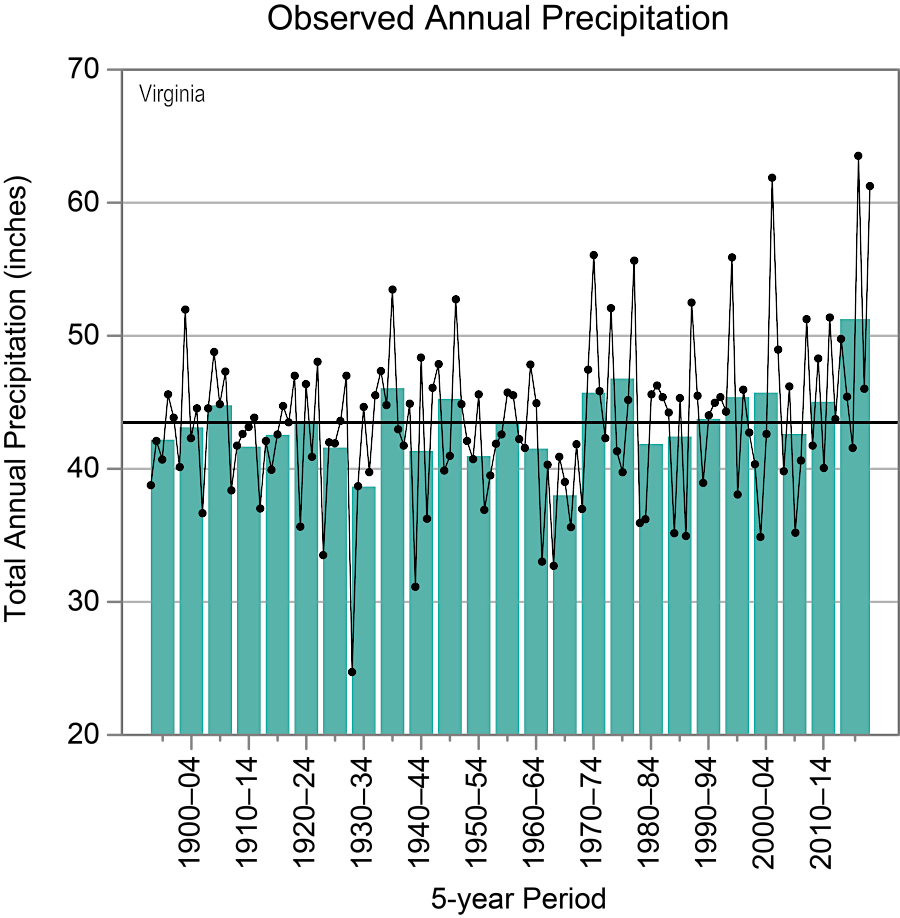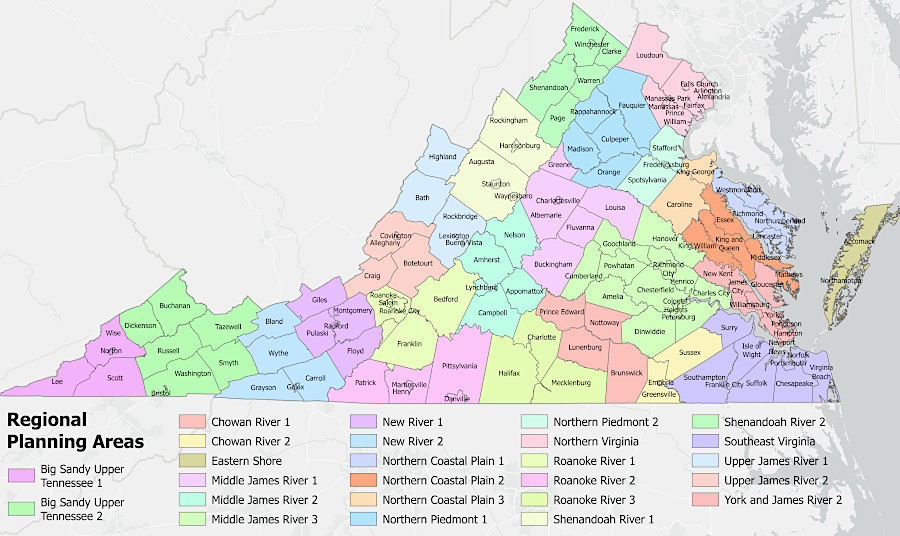
Virginia's most severe drought in modern times was during the Great Depression in 1930
Source: National Oceanic and Atmospheric Administration (NOAA), State Climate Summaries 2022 - Virginia

Virginia's most severe drought in modern times was during the Great Depression in 1930
Source: National Oceanic and Atmospheric Administration (NOAA), State Climate Summaries 2022 - Virginia
Rainfall in Virginia averages 43.5 inches annually. Each year the actual rainfall is above or below the median, sometimes significantly.1
Planning for interruptions in water supply is not a modern concept. Since Native Americans adopted agriculture 3,000 years ago, farmers have recognized the risk of dry periods when corn and other crops might not produce the expected supply of food. When English colonists arrived in 1607, they discovered Chief Powhatan kept stockpiles of dried corn in his warehouses in case of crop failure.
In Virginia, Native American farmers relied upon natural rainfall and did not develop irrigation systems. Towns were located near rivers and other water sources; wells were not dug to provide a reliable water supply for concentrations of people. Droughts lasting multiple years disrupted Native American populations, triggering migration and conflict. By chance, English colonists reached the New World at a time of unusually severe drought:2
Virginia's lowest annual rainfall in modern times was during the Great Depression in the 1930's. A 1990-2002 drought triggered modern water supply planning requirements. In Charlottesville, the worst drought was in 2002 and the second-worst was in 1930. Water supply plans are based on such droughts, with reservoirs sized to provide adequate water until normal rainfall returns again.
Rainfall began to recover after August, 2002. At the peak of the drought then:3
The General Assembly passed legislation in 2002 requiring localities to develop long-range water supply plans and to update them every 10 years. Between 2008 and 2011 10 jurisdictions produced "local" plans to meet their individual needs. Other localities partnered together and published an additional 38 "regional" plans.
Virginia's first statewide water supply plan was published in 2015:4
The 2015 plan predicted that the demand for water would increase 32% between 2010-2040. To meet the increased need, 77% of the additional water would come from surface water resources and 23$ from groundwater. To meet the need, new withdrawal locations would have to be established in addition to the existing 800 surface water withdrawals sites (reservoirs, plus stream and spring sources) and the existing 2,900 groundwater wells for public use.
Less than 20% of the surface withdrawals had a state-issued permit which would be reviewed/revised every 15 years. The unpermitted withdrawals were legal, "grandfathered" because they were in use before permitting requirements were established after passage of the Surface Water Management Area law in 1989. Users withdrawing surface water without a permit were not obligated to implement conservation procedures during a drought.
In addition, 1.6 million state residents relied upon individual private wells to tap groundwater aquifers. There were no conservation requirements for those private wells, though many users were already familiar with the need to reduce use during dry periods. A common phrase in rural areas for reducing the number of times a toilet was flushed was "if it's yellow, let it mellow; if it's brown, flush it down."
The Ground Water Management Act of 1992 defined two Groundwater Management Areas and permitting requirements for large withdrawals of 300,000 gallons or more in any one month. Accomack and Northampton counties are included within the Eastern Shore Groundwater Management Area. The Eastern Virginia Groundwater Management Area was expanded on January 1, 2014 to include all the land between Interstate 95 and the Chesapeake Bay.5

25 regional water supply plans are developed and updated in Virginia
Source: Virginia Department of Environmental Quality (DEQ), Regional Planning Areas Map